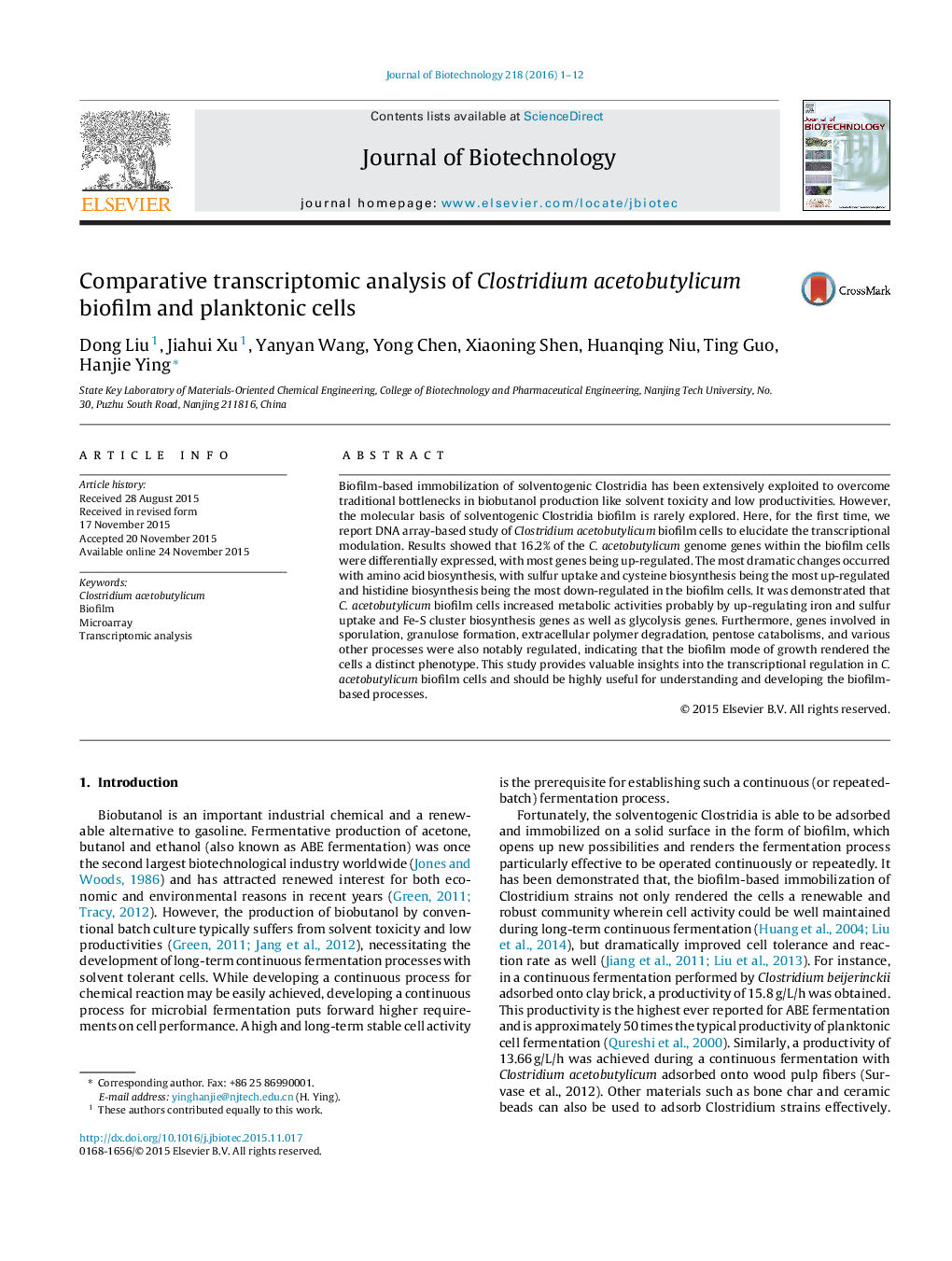| Article ID | Journal | Published Year | Pages | File Type |
|---|---|---|---|---|
| 6490722 | Journal of Biotechnology | 2016 | 12 Pages |
Abstract
Biofilm-based immobilization of solventogenic Clostridia has been extensively exploited to overcome traditional bottlenecks in biobutanol production like solvent toxicity and low productivities. However, the molecular basis of solventogenic Clostridia biofilm is rarely explored. Here, for the first time, we report DNA array-based study of Clostridium acetobutylicum biofilm cells to elucidate the transcriptional modulation. Results showed that 16.2% of the C. acetobutylicum genome genes within the biofilm cells were differentially expressed, with most genes being up-regulated. The most dramatic changes occurred with amino acid biosynthesis, with sulfur uptake and cysteine biosynthesis being the most up-regulated and histidine biosynthesis being the most down-regulated in the biofilm cells. It was demonstrated that C. acetobutylicum biofilm cells increased metabolic activities probably by up-regulating iron and sulfur uptake and Fe-S cluster biosynthesis genes as well as glycolysis genes. Furthermore, genes involved in sporulation, granulose formation, extracellular polymer degradation, pentose catabolisms, and various other processes were also notably regulated, indicating that the biofilm mode of growth rendered the cells a distinct phenotype. This study provides valuable insights into the transcriptional regulation in C. acetobutylicum biofilm cells and should be highly useful for understanding and developing the biofilm-based processes.
Related Topics
Physical Sciences and Engineering
Chemical Engineering
Bioengineering
Authors
Dong Liu, Jiahui Xu, Yanyan Wang, Yong Chen, Xiaoning Shen, Huanqing Niu, Ting Guo, Hanjie Ying,
